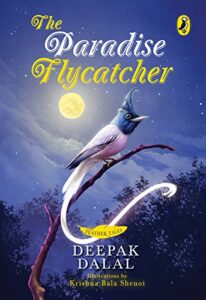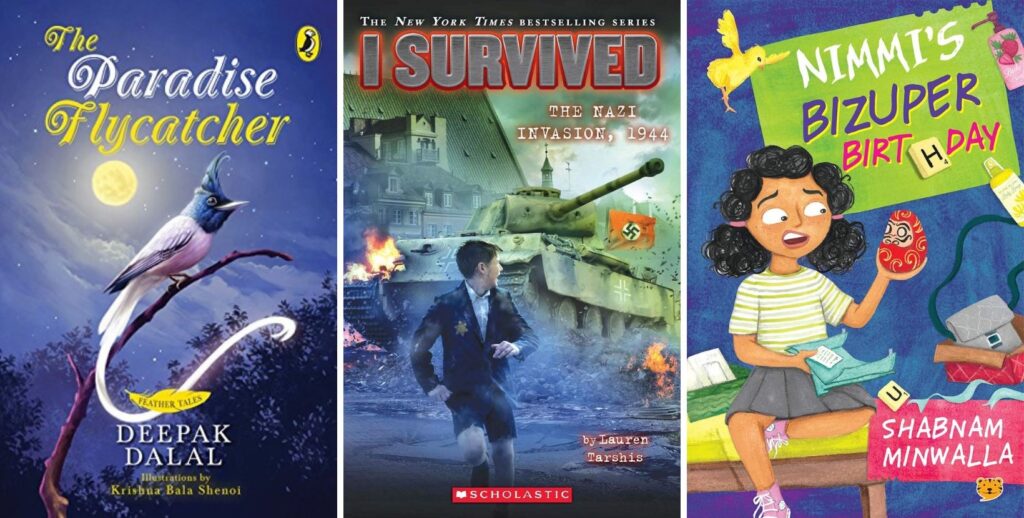It’s impossible to write about The Paradise Flycatcher without mentioning the gorgeous illustrations. I felt the same way about The Golden Eagle, which we read at my book club some time ago. Krishna Bala Shenoi’s art work, right through the book, is stunning, and if for nothing else, I would have picked The Paradise Flycatcher for one of my reading programmes just for the pictures! (On an aside, I loved his work in Friends Behind Walls too, which I used at another reading programme.)
We read it a few years ago; we’re rereading it in April 2025!
Mitalee is distraught. Shikar, aka Snowdrop, a white-headed squirrel, has disappeared! She knows Chintu and Arjun are behind this disappearance, but knowing that is not enough. She must save Snowdrop before something dreadful happens. The good thing is that she has help from a bunch of feathered friends – Bongo, Blackpie, Senora, Kabul … And the adventure begins.

Animal Stories
Animal stories are a delight, and creative writing is an important part of Read, Write, Explore.
Quiz on Idioms
The Paradise Flycatcher is full of bird idioms, so we will do a quiz based on these idioms as well as a few more!
Descriptive Writing
In a book with such stunning pictures, we must do an activity based on the illustrations. We’ll play a game, using our imagination to describe pictures of our choice in an interesting way.
Join a programme!
Read, Write, Explore combines the fun of a book club with an introduction to creative writing. One class every two weeks is devoted to writing of some sort, making the programme perfect for creative children who aren’t yet committed to writing.
Registrations are now closed for the April-May 2025 edition of Read, Write, Explore. New batches begin every alternate month. Join my mailing list if you would like to receive email notifications about my programmes. Alternatively, follow me on social media – Facebook and Instagram – for regular updates.


Leave a Reply